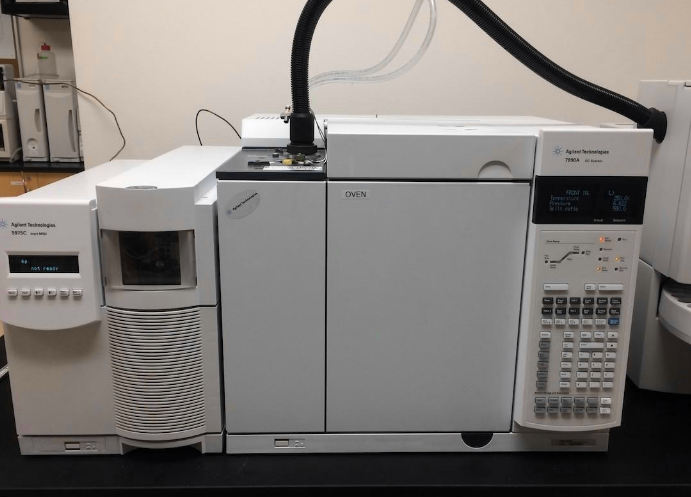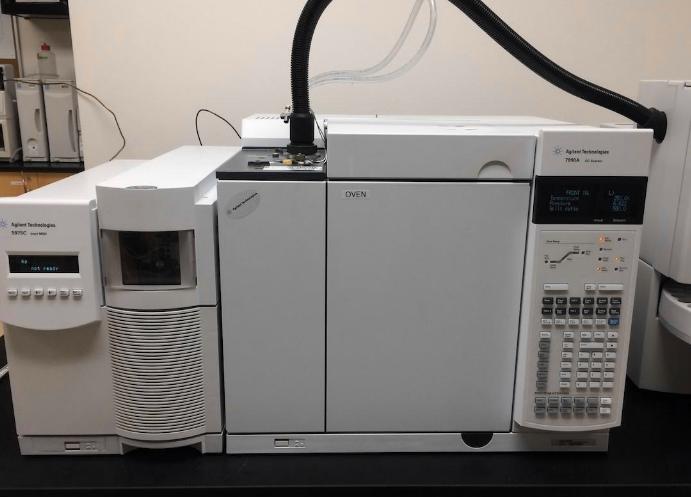In gas chromatography (GC), one frequently uses a variety of detectors, each of which has its own set of strengths and weaknesses, as well as its own place in the field. The type of the sample that is being analyzed and the particular application both play a role in determining the detector that should be used. The following is a list of common types of detectors used in GC:
The flame ionization detector (FID) is the detector that is utilized in GC analysis the most frequently. It generates a signal that is proportional to the amount of carbon atoms present in the sample, and gas chromatography machine (please see) is sensitive to organic compounds that can be ionized in a flame composed of hydrogen and air. The FID is a technique that is frequently utilized for the analysis of organic compounds and substances such as pesticides and hydrocarbons.
Thermal conductivity detector (TCD): This detector is sensitive to changes in the thermal conductivity of the carrier gas caused by the presence of sample components. These changes occur when the detector is exposed to the sample components. TCD is less sensitive than FID, but it can detect a wider range of compounds, including inorganic gases like nitrogen, oxygen, and carbon dioxide. In addition, TCD can detect a wider range of organic compounds.
Electron capture detector (ECD): This detector is used to detect compounds that have a high affinity for electrons, such as halogenated organic compounds and pesticides. Other compounds that can be detected with an electron capture detector include radioactive isotopes. It does this by measuring the reduction in current flow that is brought about by the sample components capturing electrons, which is how it works.
This detector is used to identify and quantify the individual components of a sample based on their mass-to-charge ratio. It is called a mass spectrometer, or MS for short. It is able to provide measurements that are extremely accurate and precise; however, compared to other types of detectors, it is more expensive and complex.
This detector is sensitive to certain elements, including sulfur, phosphorus, and nitrogen, and it can be used to detect organophosphorus pesticides, sulfur-containing compounds, and other compounds that are chemically similar.
In the process of gas chromatography, what function does the carrier gas play?
The operation of the GC machine begins with the injection of a sample into the injection port, where it is vaporized before being transported through the column by the carrier gas. As the components of the sample interact with the material that makes up the column's stationary phase, the components of the sample are separated. The detector will pick up on the components that have been separated, and it will then generate an electrical signal that will be transmitted to the data system so that it can be analyzed. The data that were gathered as a result can be utilized to determine and quantify the various components of the sample.
In gas chromatography (GC), the carrier gas is an essential component that serves an important purpose in both the component separation process and the component analysis process. The primary responsibility of the carrier gas is to move the sample through the GC column, which is the location where the components are separated from one another.
The carrier gas is typically an inert gas such as helium, nitrogen, or hydrogen that does not react with either the sample or the GC column. This allows the carrier gas to transport the sample without altering its composition. The characteristics of the sample as well as the objectives of the analysis will guide the selection of the appropriate carrier gas. Helium, for instance, is frequently utilized as a carrier gas due to the fact that it possesses a low molecular weight and low reactivity, both of which make it possible to perform separations in a quick and effective manner. Nitrogen is another gas that is frequently used as a carrier gas. This is especially common in the field of environmental and food analysis because nitrogen is both affordable and readily available. When analyzing small molecules, hydrogen is sometimes utilized as a carrier gas in the analysis process.
In GC analysis, the flow rate of the carrier gas is another important parameter to take into consideration. The flow rate needs to be high enough to move the components of the sample through the column, but it needs to be low enough to ensure that the components are properly separated. The retention time of the components is also affected by the flow rate. This is the amount of time it takes for each component to travel through the column and be detected by the detector after it has been measured.
In conclusion, the carrier gas is an essential component of the GC analysis process because it is responsible for transporting the sample through the column and enabling the separation and detection of the various components of the sample. In order to obtain precise and trustworthy results, it is necessary to carefully optimize both the flow rate and the carrier gas that is used.

